HANNIBAL (2001)
Living in exile, Dr Hannibal Lecter tries to reconnect with now disgraced FBI Agent Clarice Starling, and finds himself a target for revenge from a powerful victim.
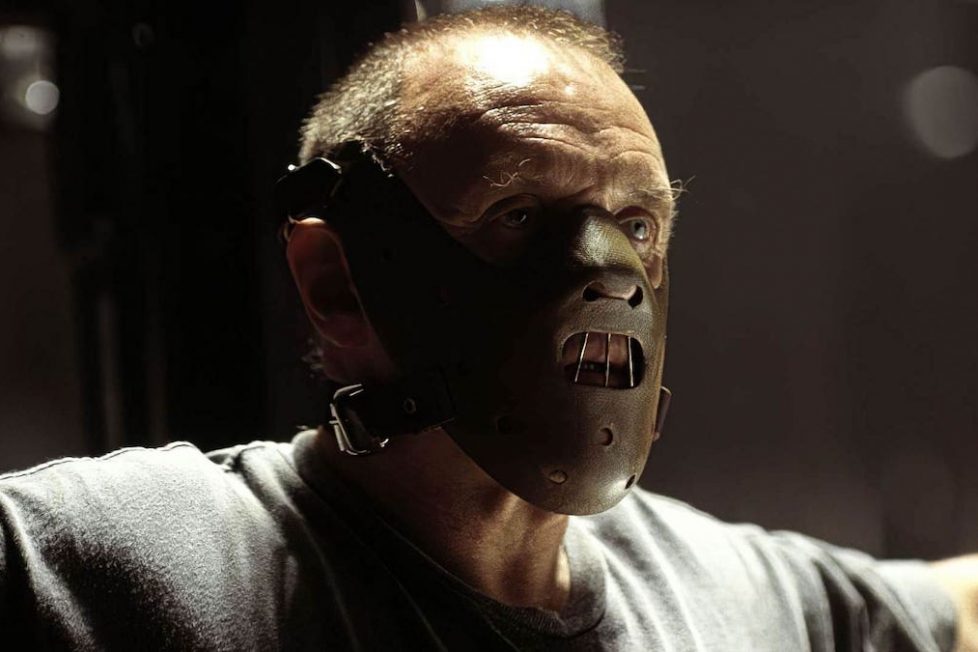
Living in exile, Dr Hannibal Lecter tries to reconnect with now disgraced FBI Agent Clarice Starling, and finds himself a target for revenge from a powerful victim.


Does Lecter want to fuck her, or kill her, or eat her alive?
This is how Thomas Harris became a literary rock star. 1981’s Red Dragon introduced a fierce style that assaulted the bourgeois audience of crime-fiction like inter-cutting episodes of Columbo with a snuff film. The unflinching confidence to take us back and forth between dry detective paperwork and the unfettered ravings of a killer was hypnotic. Our Poirot was now a cannibal psychiatrist who takes equal pleasure in teaching art history and eating his students: Hannibal ‘The Cannibal’ Lecter.
Like the madman himself, Hannibal thunders along with confidence on the balancing act between high art and exploitation. Ridley Scott (Blade Runner) delivers a film of impeccably grand style, stymied by trash substance, producing an unintentional appropriation of haute couture.
Red Dragon introduced the series’ formula of an FBI agent investigating serial killers, with begrudged assistance and insight from notorious criminal Dr Lecter. Despite lush direction from Michael Mann and a remarkable Brian Cox as “Lecktor”, producer Dino De Laurentiis claimed “Manhunter was no good.” When Harris wrote a best-selling sequel in 1988, Dino and his then-partner Martha lent the rights to Orion for free… and Jonathan Demme’s resulting The Silence of the Lambs (1991) won five Academy Awards—for ‘Best Picture’, ‘Best Director’, ‘Best Actor’, ‘Best Actress’, and ‘Best Adapted Screenplay’. It also grossed a remarkable $272M from a $19M budget.
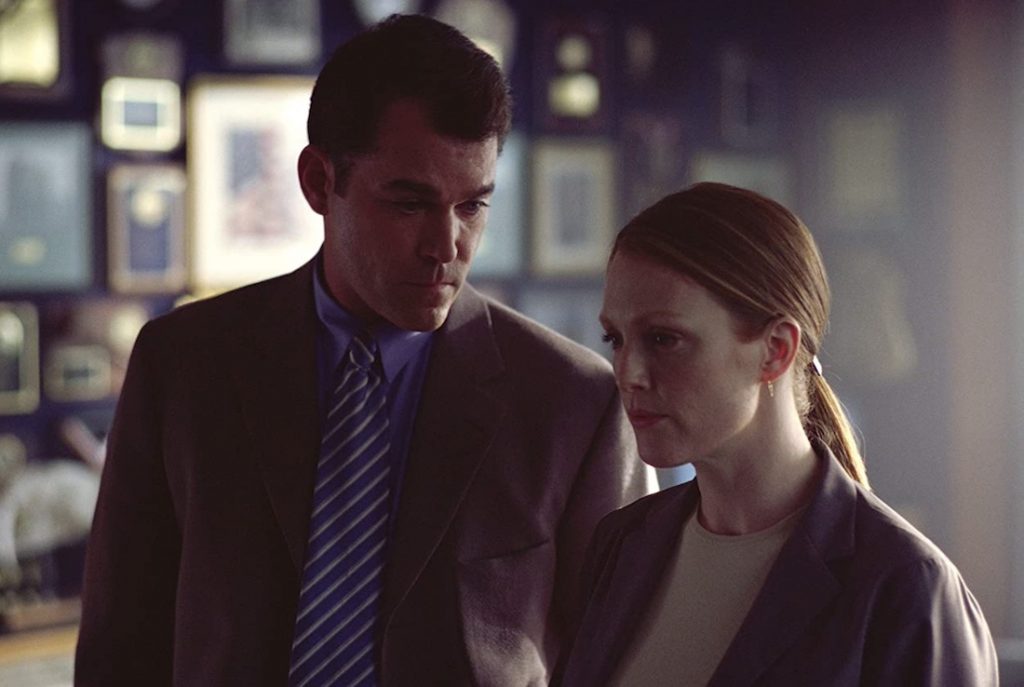
Then De Laurentiis sat patiently as his company still had a deal with Thomas Harris. The world also waited in anticipation of seeing more from ‘Hannibal the Cannibal’. De Laurentiis received the call eight years later that a new book had been written and he paid a record $10M to secure the movie rights.
No, not as good. This one is better. It is, in fact, one of the two most frightening popular novels of our time, the other being The Exorcist.—Stephen King after reading ‘Hannibal’
Clarice Starling (Julianne Moore) receives an invitation from Dr Lecter (Anthony Hopkins) years after his shocking escape from a maximum security prison. Now ostracised by the FBI, Starling starts consulting with wealthy child-molester Mason Verger (Gary Oldman), who’s seeking vengeance after being heavily disfigured by their mutual target.
With King’s praise ringing in his ears, De Laurentiis was all in on making Hannibal, agreeing a $100M budget and promising the on-screen reunion of Anthony Hopkins, Jodie Foster, Jonathan Demme, and screenwriter Ted Tally. Only one of those returned because not everyone had received Hannibal as well as King. Martin Amis colourfully wrote that “Harris has become a serial murderer of English sentences, and Hannibal is a necropolis of prose.”
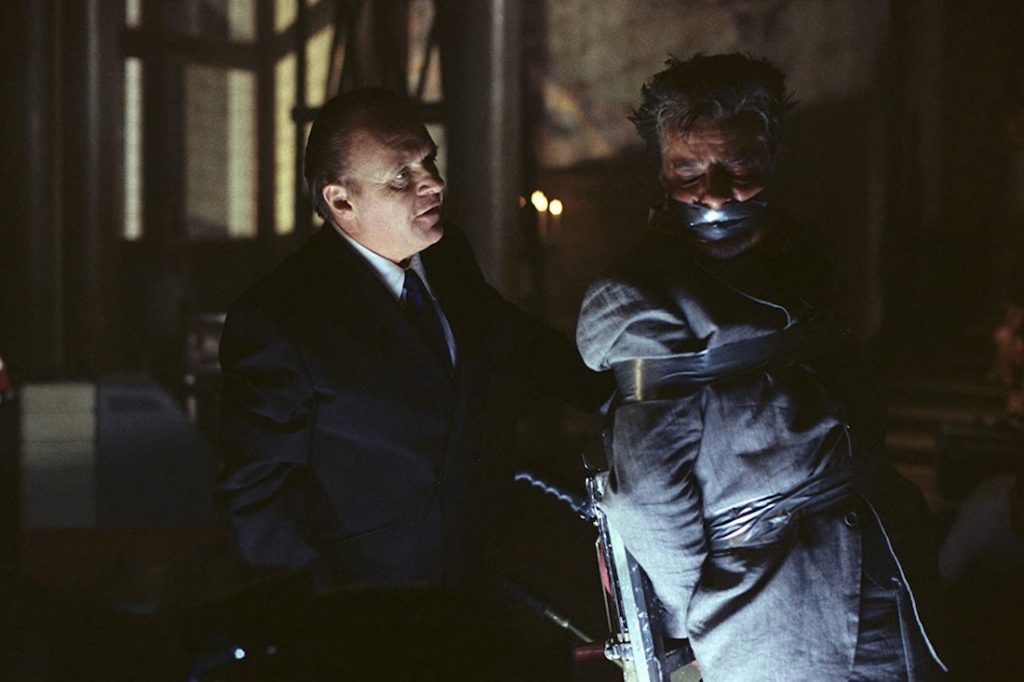
Ridley Scott thought the novel was a “symphony” as he blitzed through it during the making of Gladiator (2000), but even he wanted to change the controversial ending. Pulitzer-winning screenwriter David Mamet was hired and struggled to adapting any of it faithfully. One script review described his effort as “stunningly bad” despite how his patented ‘Mamet speak’ (precision dialogue riddled with semantics and vulgarities) seemed like a perfect fit for the material. No small task was whittling down the mammoth 600-page novel, so writer Steven Zaillian worked tirelessly with Scott to knock Hannibal into something shootable.
With the combined talent that brought us Gladiator, Glengarry Glenn Ross (1992), and Schindler’s List (1993), audiences were now interested in seeing the return of Hopkins, even without his famous co-star and the acclaimed director of Silence.
I was kind of surprised by this book, I thought it was really overreaching and so bizarre.—Anthony Hopkins.
Slipping back into the role with ease, Hannibal is an entirely new expansion of the eponymous villain. Not only freed from prison and his 16-minute screen time of before, Hannibal essentially became the protagonist. That was both a good and bad thing. As King wrote as a compliment, Hannibal elevates the character to a mythic modern-day Dracula. In captivity, the most dangerous aspect of Lecter was his mind, but Hopkins performance out in picturesque Italy is strangely lackadaisical. He gets plenty of cheeky dialogue to chew on, but at times, Hannibal feels like an untouchable supervillain. His superiority is never authentically challenged, which deflates a lot of tension Scott attempts to build into the story, turning Hannibal into a horror with no thrills.
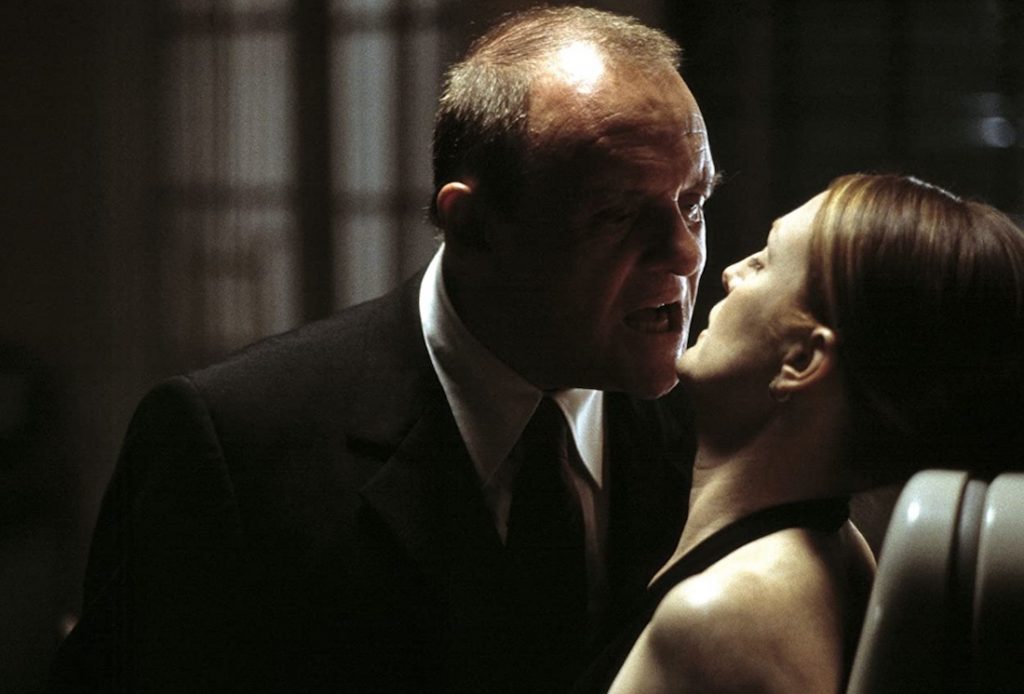
Moore delivers a fantastic performance considering what she’s given to play as Clarice, and with better material might have been a worthy successor to Jodie Foster. Venturing beyond prison dungeons and into darker underworlds, Moore acquits herself with well as a beaten down agent whose past victories have faded with too many recent failures. Even if Foster had returned, gone is the doe-eyed determinism of Silence’s younger Clarice. The biggest disappointment regarding Moore’s effort is the total absence of any discernible arc for her character.
Scott aims for a darkly comic fairy tale, taking the foreboding dread of Silence and transforming it into full-blooded fervency. The construction of his epic approach buries actual character development in favour of thematic grandeur. I don’t comprehend what the point of Hannibal is. But then I think of the book’s ending they dropped, which would have been a bizarre and perverse climax to the film, but one that definitely concludes the story… albeit controversially. Without it, Hannibal lacks a proper conclusion because both characters are left in the same situation as they started… only worse off.
Clarice’s story in Silence is an enduring one about overcoming insecurities about placing herself, as a vulnerable young woman, into the jaws of danger and succeeding… but this follow-up is one of constant failure and emotional torment where even the antagonist is dispatched by a tertiary character while Clarice is unconscious. I recognise significance in the truer finale; Hannibal tests her steadfastness to a system that abuses her loyalty to law and order. Clarice’s failure in Hannibal escaping is less important than her fortitude in trying; the final handcuff gambit reveals their shared character in sacrificing everything for core beliefs. Perhaps Hannibal stings most without the satisfaction in seeing Clarice get another chance, we’re left to believe she will.
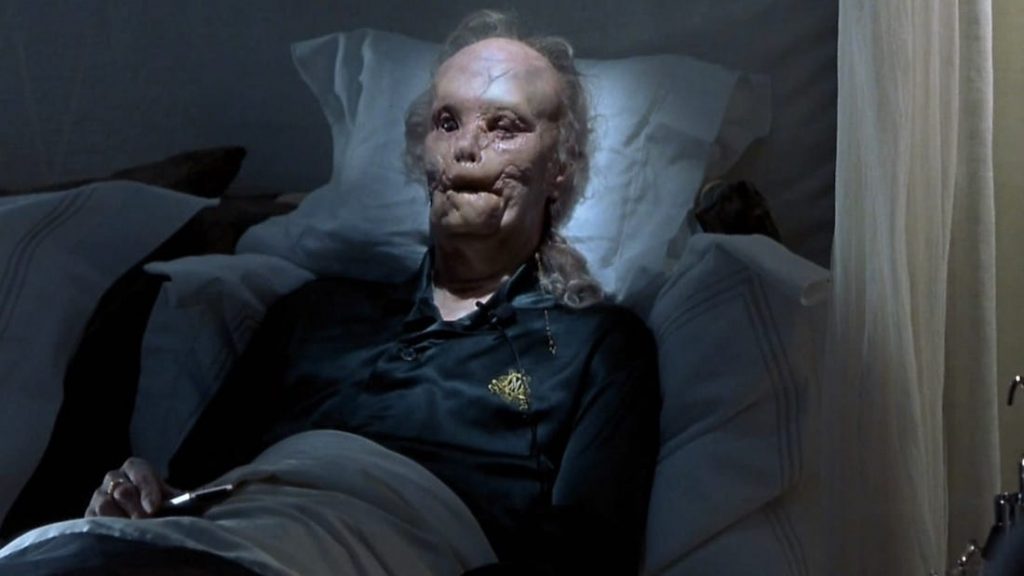
Film critic Roger Ebert derided Hannibal as “a carnival geek show elevated in the direction of art.” I echo that but as a compliment. Scott’s an incredible visual director, but I’d canonise him as a journeyman rather than a true auteur. All of his films carry extensive behind-the-scenes production highs and lows and that struggle is felt the most on-screen here.
The opening credits with the Florentine pigeons amassing to form Hannibal is a fundamental example of the shortcomings of this film. Only ever intended as promotional shot, Scott was enamoured by how it looked and added it to the film. But pigeons making the lead character’s face isn’t cool, it’s stupid and funny. And what Scott failed to recognise is how perfectly it sets up the movie as a camp parody of Silence. He thought the sequence asked the audience to ask ‘where is Hannibal?’, but it only made me ask if this gaudy art is meant to be taken seriously.
Scott got to evade critical re-evaluation over the quality of Hannibal as the money spoke for itself. There was a handsome return on its large $85M budget with a worldwide box office gross of $351M, making it the highest opening for a horror movie until It (2017) premiered, and the biggest opening of any R-rated film until The Passion of the Christ (2004).
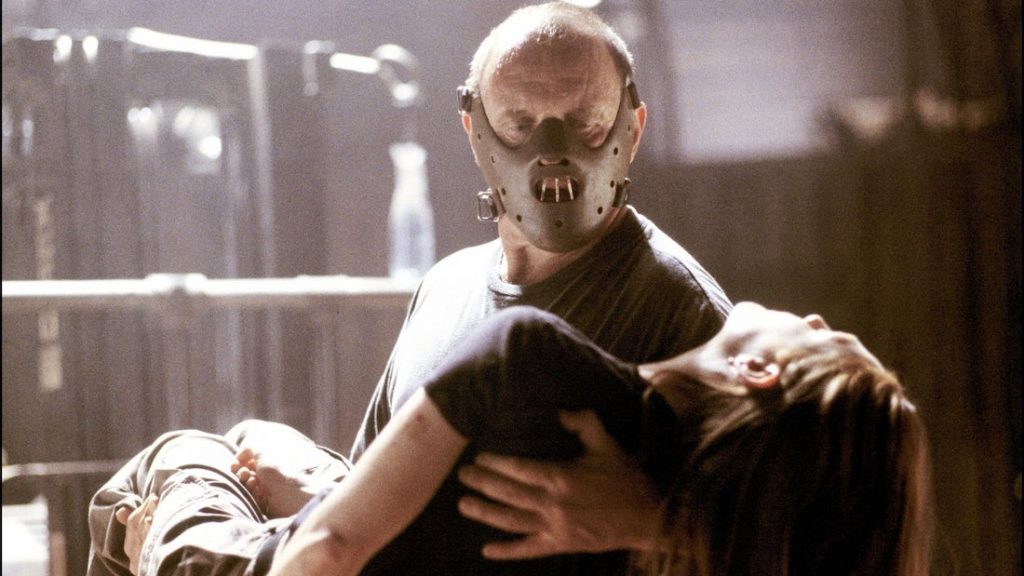
It was a rousing success for De Laurentiis, who fast-tracked a new adaptation of Red Dragon only a year later in 2002. Hopkins returned to complete a ‘trilogy’, but felt noticeably tired playing a younger Dr Lecter and the film earned middling reviews, although the box office takings were still an impressive $209M. A Hopkins-less prequel, Hannibal Rising (2007), was only made because De Laurantiis threatened to continue with or without Harris’s involvement, and the less said about that thing the better.
Alas, after inspiring the saturation of explicit violence in crime procedurals, Hannibal Lecter later found an unlikely home on US network television with three-seasons of Hannibal (2013-15)—where showrunner Bryan Fuller mined the inherent camp excessiveness to great critical success. While many fans still mourn Hannibal’s cancellation before it could perhaps tackle The Silence of the Lambs storyline, a new TV series called Clarice is set to debut on 2021 and promises an authentic revival of her post-Silence character without Lecter legally being allowed to appear.
Without new source material coming from Harris anytime soon, the character of Hannibal Lecter threatens to just repeat his old crimes for new generations. Though Hannibal proves that even if art is objectively bad there’s still subjective entertainment to be found.
USA • UK • ITALY | 2001 | 131 MINUTES | 1.85:1 | COLOUR | ENGLISH • ITALIAN • JAPANESE

director: Ridley Scott.
writers: David Mamet & Steven Zaillian (based on the novel by Thomas Harris).
starring: Anthony Hopkins, Julianne Moore, Ray Liotta, Frankie R. Faison, Giancarlo Giannini, Francesca Neri & Gary Oldman.
